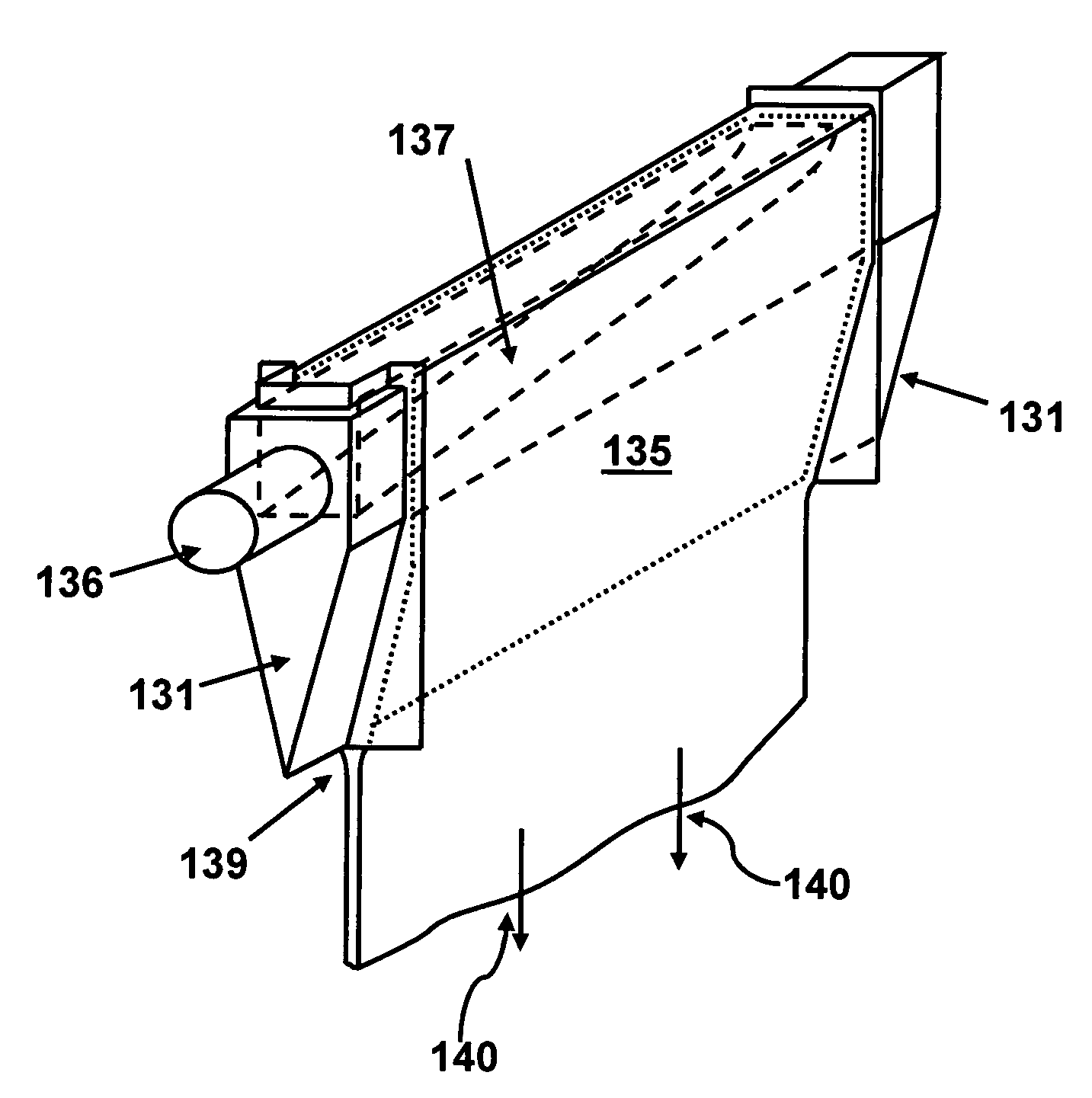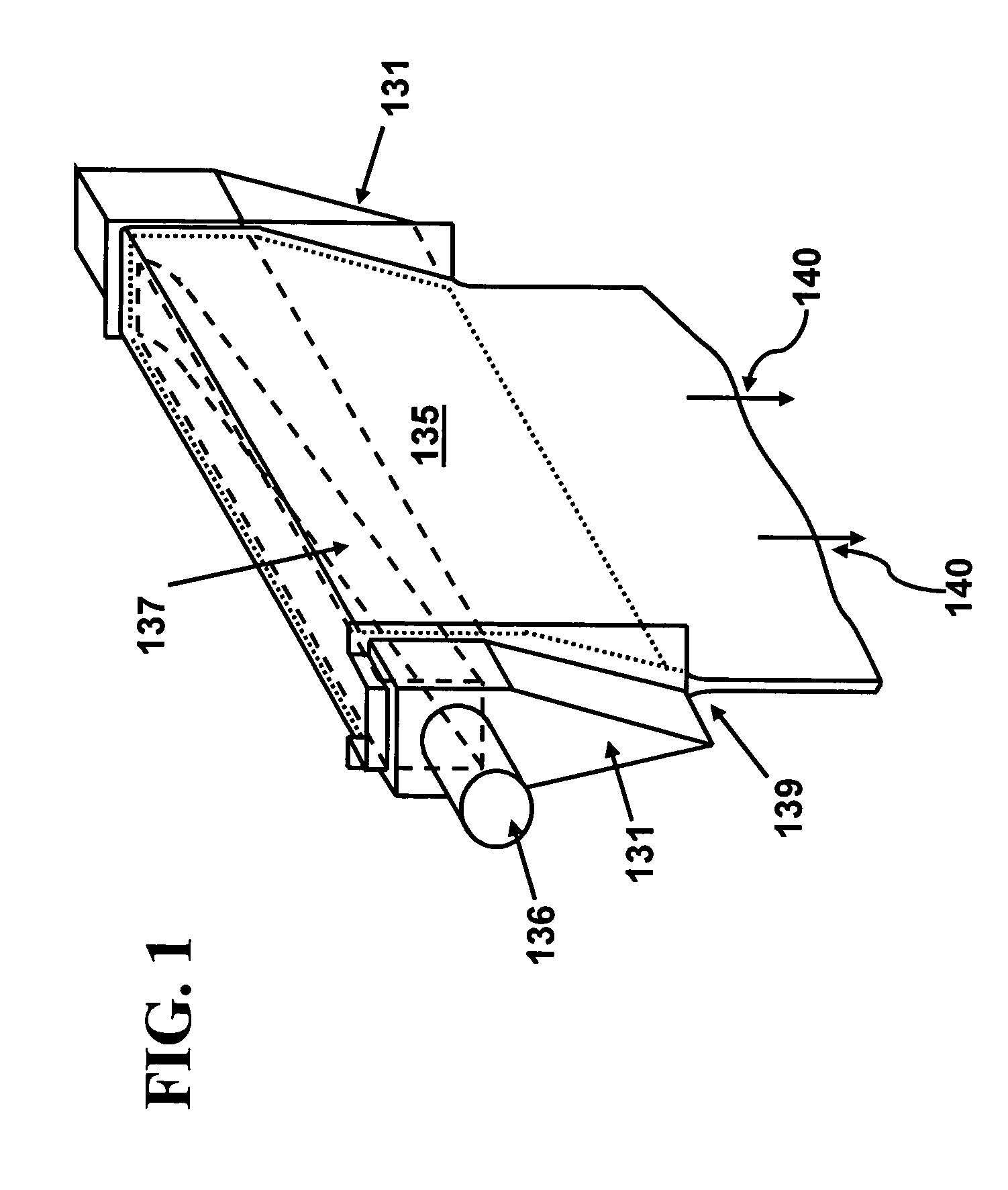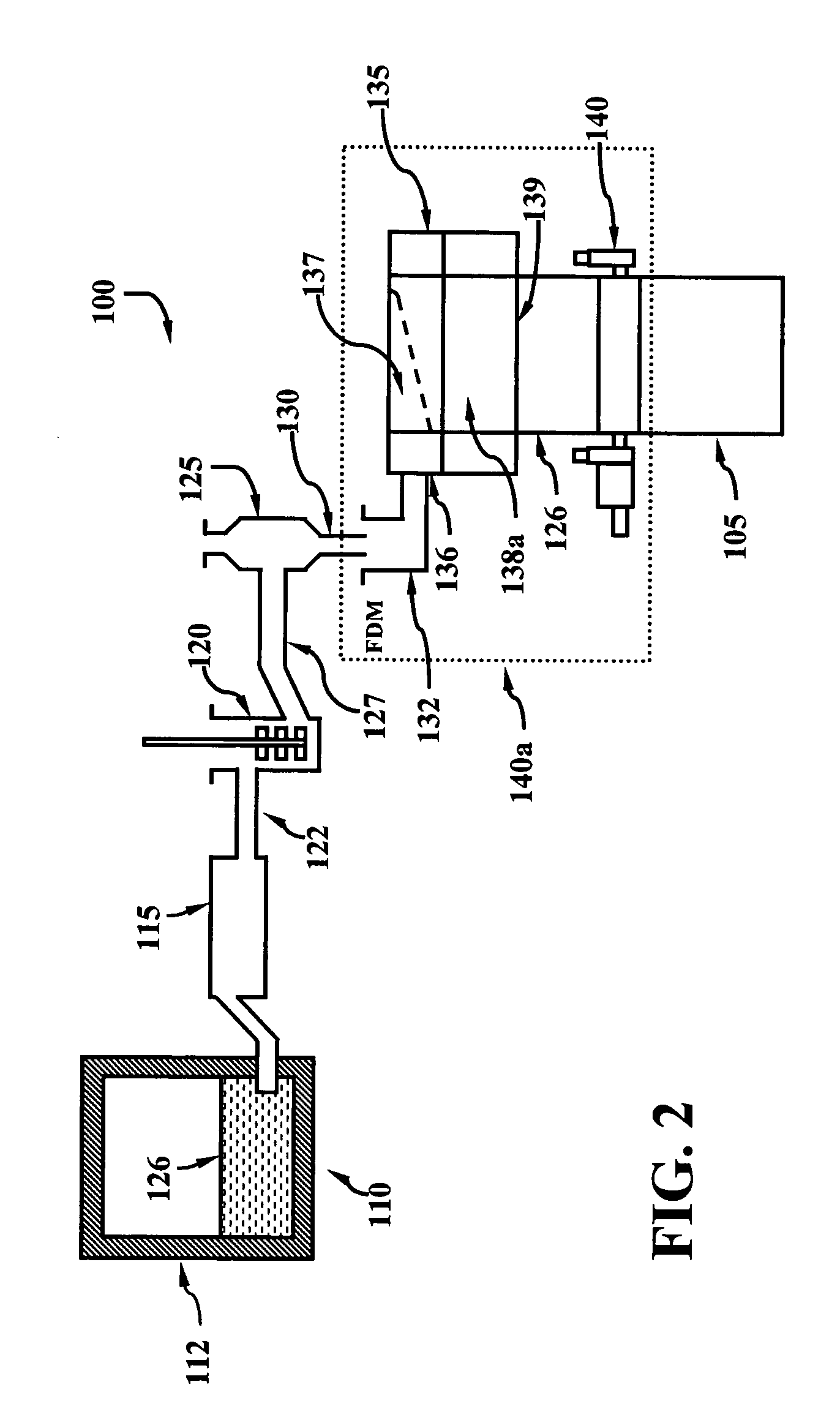Process to preserve isopipe during coupling
a technology of isopipes and couplings, applied in glass rolling apparatus, glass tempering apparatus, manufacturing tools, etc., can solve problems such as limiting their useful life, and achieve the effect of reducing the tensile stress of isopipes during us
- Summary
- Abstract
- Description
- Claims
- Application Information
AI Technical Summary
Benefits of technology
Problems solved by technology
Method used
Image
Examples
example 1
Typical Heat-Up and Coupling Process
[0094]In a first example, a zircon isopipe subjected to a typical heating schedule, as illustrated in FIG. 3, is modeled. In this figure, MRTS means maximal root tensile stress. As the isopipe is heated and the temperature difference between the weir and the root increases, the tensile stress on the isopipe root also increases to about 1,600 psi. At the end of the heating schedule, the isopipe is coupled to the down-corner, resulting in a temperature drop at the root of about 60° C. This quick temperature change results in an increase in the root tensile stress of about 2,100 psi (i.e., from about 1,600 psi to about 3,700 psi).
example 2
Incorporation of a Temperature Hold
[0095]In a second example, a zircon isopipe initially heated as in Example 1 is modeled, but prior to coupling the isopipe to the down-corner, the temperature is maintained for a period of 33 hours (FIG. 4, period shown as “HP”). While the temperature difference between the weir and the root is not significantly different from the heating schedule of Example 1, the maximum tensile stress on the isopipe, during coupling, is approximately 2,600 psi when a temperature hold is used, compared to 3,700 psi in the absence of a temperature hold.
example 3
Reduction of Delta Temperature Prior to Coupling
[0096]In a third example, a zircon isopipe initially heated as in Example 1 is modeled, but the heating schedule is modified such that the temperature difference between the weir and the root at the end of the heating schedule and prior to coupling is reduced to 60° C. FIG. 5 illustrates the difference in maximum root tensile stress between this heating schedule and the heating schedule presented in Example 2 (with 33 hour temperature hold). The tensile stress at the end of the modified heating schedule and prior to coupling is less than 500 psi.
PUM
| Property | Measurement | Unit |
|---|---|---|
| Temperature | aaaaa | aaaaa |
| Temperature | aaaaa | aaaaa |
| Temperature | aaaaa | aaaaa |
Abstract
Description
Claims
Application Information
 Login to View More
Login to View More - R&D
- Intellectual Property
- Life Sciences
- Materials
- Tech Scout
- Unparalleled Data Quality
- Higher Quality Content
- 60% Fewer Hallucinations
Browse by: Latest US Patents, China's latest patents, Technical Efficacy Thesaurus, Application Domain, Technology Topic, Popular Technical Reports.
© 2025 PatSnap. All rights reserved.Legal|Privacy policy|Modern Slavery Act Transparency Statement|Sitemap|About US| Contact US: help@patsnap.com



